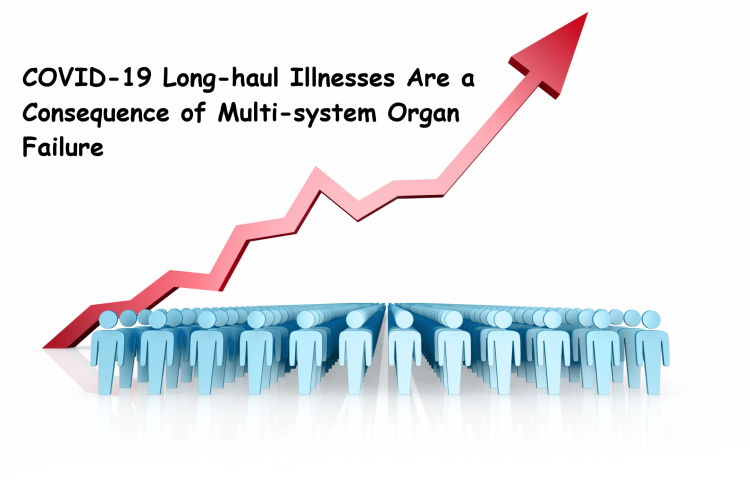Authors: Pooja Toshniwal PahariaMar 24 2022Reviewed by Danielle Ellis, B.Sc.
In a recent study posted to the medRxiv* preprint server, researchers assessed the prevalence of organ impairment in long coronavirus disease 2019 (COVID-19) six months and a year post-COVID-19 at London and Oxford.
Multi-organ impairment associated with long COVID-19 is a significant health burden. Standardized multi-organ evaluation is deficient, especially in non-hospitalized patients. Although the symptoms of long COVID-19, also known as post-acute sequelae of COVID-19 (PASC), are well-established, the natural history is poorly classified by symptoms, organ impairment, and function.
About the study
In the present prospective study, researchers assessed organ impairment in long COVID-19 patients six months and a year after the onset of early symptoms and correlated them to their clinical presentation.
The participants were recruited based on specialist referral or the response to advertisements in sites such as Mayo Clinic Healthcare, Perspectum, and Oxford from April 2020 to August 2021, based on their COVID-19 history.
The study was conducted on COVID-19 patients who recovered from the acute phase of the infection. Their health status, symptoms, and organ impairment were assessed. The symptoms assessed comprised cardiopulmonary, severe dyspnoea, and cognitive dysfunction. Biochemical and physiological parameters were analyzed at baseline and post-organ impairment. The radiological investigation comprised multi-organ magnetic resonance imaging (MRI) performed in the long COVID-19 patients and healthy controls.
Over a year, the team prospectively investigated the symptoms, organ impairment, and function, especially dyspnea, cognitive dysfunction, and health-related quality of life (HRQoL). They also evaluated the association between organ impairment and clinical symptoms.
Patients with symptoms of active pulmonary infections (body temperature >37.8°C or ≥3 coughing episodes in a day) and hospital discharges in the previous week or >4 months were excluded from the study. Asymptomatic patients and those with MRI contraindications such as defibrillators, pacemakers, devices with metal implants, and claustrophobia were removed.
Participants with impaired organs, as diagnosed by blood investigations, incidental findings, or MRI, were included in the follow-up assessments. Every visit comprised blood investigations, MRI scanning, and online questionnaire surveys, which were to be filled out beforehand. In addition, a sensitivity analysis was performed that excluded patients at risk of metabolic disorders (including body mass index (BMI) ≥30 kg/m2, diabetes, and hypertension)
Results
Related Stories
- Study shows potential inhibition of SARS-CoV-2 main protease by natural phytochemicals
- Evaluating severity of influenza infection in ferrets with COVID-19 history
- Dynamics of SARS-CoV-2 viral load in vaccinated and recovered individuals
Out of 536 participants, the majority were middle-aged (mean age 45 years), female (73%), White (89%), and healthcare workers (32%). About 13% of the COVID-19 patients hospitalized during the acute phase of the infection completed the baseline evaluation. A total of 331 patients (62%) had incidental findings, organ impairment, or reduction in the symptoms from the baseline at both the time points.
Cognitive dysfunction (50% and 38%), poor HRQoL (EuroQOL <0.7 in 55% and 45%), and severe dyspnea (36% and 30%) were observed at six months and one year, respectively. On follow-up, the symptoms were reduced, especially cardiopulmonary and systemic symptoms, whereas fatigue, dyspnea, and cognitive dysfunction were consistently present. The greatest impact on quality of life was related to pain and difficulties performing routine activities. Almost every patient took time off work due to COVID-19. The symptoms were largely associated with obese women, young age, and impairment of a single organ.
At baseline, fibrous inflammation was observed in the pancreas (9%), heart (9%), liver (11%), and kidney (15%). Additionally, increased volumes of the spleen (8%), kidney (9%), and liver (7%) were observed. Moreover, reduced lung capacity (2%), excess adipose deposits in pancreatic tissues (15%) and liver (25%) were observed. High liver fibro-inflammation was associated with cognitive dysfunction at follow-up in 19% and 12% of patients with and without cognitive dysfunction, respectively. Low liver fat was more likely in those without severe dyspnoea at both time points. Increased liver volumes at follow-up were associated with lower HRQoL scores.
The prevalence of multi and single-organ impairment was 23% and 59% at baseline, respectively, and persisted in 27% and 59% of the participants on follow-up assessments. Most of the organ impairments were mild. However, they did not improve substantially between visits. Notably, participants without organ impairment had the lowest symptom burden.
Most biochemical parameters were normal except creatinine kinase (8% and 13%), lactate dehydrogenase (16% and 22%), mean cell hemoglobin concentration (21% and 15%), and cholesterol (46% and 48%), at six months and a year post-COVID-19, respectively. These biochemical markers increased from the baseline on follow-up assessments.
Conclusion
To summarize, organ impairment was detected in 59% of the patients at six months post-COVID-19 and persisted in 59% at one-year follow-up. This has significant implications on the quality of life, symptoms, and long-term health of the patients. These observations highlight the requirement for enhanced preventive measures and integrated patient care to decrease the long COVID-19 burden.
Journal reference:
- Andrea Dennis, et al. 2022. Multi-organ impairment and Long COVID: a 1-year prospective, longitudinal cohort study. medRxiv. doi: https://doi.org/10.1101/2022.03.18.22272607 https://www.medrxiv.org/content/10.1101/2022.03.18.22272607v1
